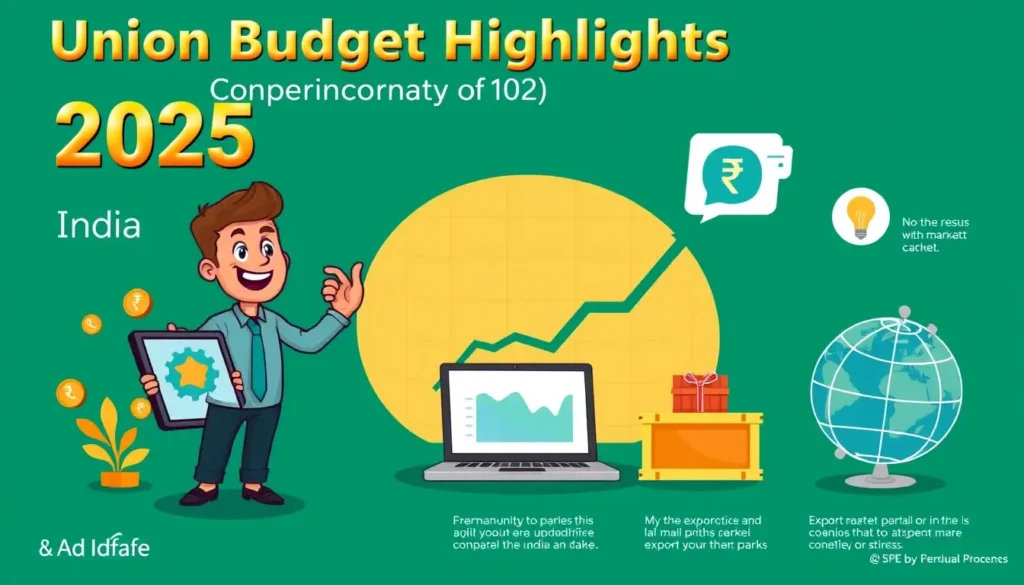
Hi friends! Ever wonder how big corporations pay taxes across different countries? Things are changing fast with the new Global Minimum Tax Pillar 2 rules kicking in fully by 2025. We’ll break down what this global tax revolution means for businesses, governments, and even everyday taxpayers like us. You’ll learn why 140+ countries agreed on this 15% floor, what implementation headaches are popping up, and how companies can stay compliant without drowning in paperwork. Whether you’re in finance, run a business, or just care about fair taxation, this is your plain-English guide to the biggest tax shakeup in decades. Let’s dive in!
The Foundation: Understanding OECD Global Tax Reform
Remember when tech giants paid almost nothing in taxes anywhere? That’s what started this whole OECD global tax reform movement. Back in 2013, the Base Erosion and Profit Shifting (BEPS) project exposed how multinationals shifted $240+ billion in profits annually to tax havens. The Global Minimum Tax Pillar 2 is the world’s answer – creating a floor so companies pay at least 15% no matter where they operate. It’s not just about fairness; it’s about stopping countries from undercutting each other with ridiculous 0% offers just to attract businesses.
Pillar 2 works alongside Pillar 1 (which tackles where profits get taxed) as a package deal. Honestly, Pillar 2 is the enforcement muscle – making sure the 15% minimum actually sticks through coordinated global pressure. The OECD estimates this could generate $150 billion in additional global tax revenue yearly. What’s brilliant is how it creates a domino effect: If one country doesn’t enforce the minimum tax, another can step in and collect the difference. You know what that means? Tax havens can’t just opt-out without consequences.
The timeline has been a rollercoaster though. Originally agreed in 2021 by 137 jurisdictions, implementation got delayed multiple times due to complex technical details. Now the countdown to 2025 is real – the Income Inclusion Rule (IIR) already applies to large multinationals since 2024, with the Undertaxed Profits Rule (UTPR) activating fully next year. This isn’t some theoretical policy debate anymore – compliance teams are burning midnight oil right now trying to decode 200+ pages of GloBE model rules.
Countries are scrambling too. Over 30 have passed domestic legislation including the EU, UK, and South Korea. But here’s the kicker: The U.S. hasn’t fully aligned its GILTI rules with Pillar 2 yet, creating potential conflicts. Meanwhile, developing nations worry about administrative burdens despite getting more revenue. The real test? Whether this complex web of rules survives real-world application when disputes erupt between tax authorities. One thing’s certain – the 2025 finish line will reveal who truly prepared for this tax marathon.
Navigating Complex Pillar 2 Implementation Rules
Okay, let’s demystify how Pillar 2 implementation actually works on the ground. At its core are three enforcement mechanisms: The Income Inclusion Rule (IIR) is the primary weapon where parent companies pay top-up taxes on low-taxed foreign subsidiaries. Then comes the Undertaxed Profits Rule (UTPR) – the “backstop” that lets other countries collect if the parent jurisdiction doesn’t act. Finally, the Qualified Domestic Minimum Top-up Tax (QDMTT) allows source countries to first claim those additional taxes themselves. It’s like a layered security system against tax avoidance with multiple fail-safes.
Calculating effective tax rates (ETR) per jurisdiction is where headaches multiply. Companies must track ETRs across all operating countries using the GloBE rules’ standardized methodology. This means reconciling different accounting standards, temporary differences, and substance-based carve-outs. For example, payroll and tangible assets can reduce calculable income by 5-7.5% under transitional rules. But here’s the rub: Tracking this requires granular data most finance systems don’t currently capture. You need real-time visibility into every subsidiary’s P&L, taxes paid, and asset registers – a data nightmare for decentralized organizations.

The compliance calendar alone is brutal. Multinationals must file GloBE Information Returns (GIRs) within 15 months after fiscal year-end (extended to 18 months for first filings). Miss deadlines? Penalties apply in multiple jurisdictions simultaneously. We’re seeing companies establish “Pillar 2 war rooms” with cross-functional teams from tax, IT, and operations. Many are adopting specialized software like Orbitax or OneSource that map entity structures and automate ETR calculations. But even with tech, interpretation disputes loom large – like whether digital services taxes count as covered taxes under GloBE rules.
Transitional safe harbors provide temporary relief but add complexity. The CbCR safe harbor lets companies use existing Country-by-Country reports for 2024-2026 if ETR exceeds 15%. The de minimis test exempts jurisdictions with revenue under €10M and profits under €1M. Smart businesses are using this breathing room to build robust systems before full enforcement. However, the biggest trap is complacency – these provisions sunset after 2026, and manual workarounds won’t scale. Forward-thinking firms are already stress-testing systems with 2025 scenarios, because partial solutions today mean compliance failures tomorrow.
15% Minimum Corporate Tax: Reshaping International Tax Policy
That magic 15% number isn’t arbitrary – it’s the compromise that brought everyone from Bermuda to Germany on board. But what does this 15% minimum corporate tax actually change? First, it neutralizes the tax advantage of profit-shifting hubs. Places like Ireland (12.5% rate) and Hungary (9%) must now either raise rates or accept top-up taxes flowing elsewhere. Early data shows over 20 low-tax jurisdictions have already adjusted policies. This fundamentally rewrites three decades of tax competition where countries raced to slash rates to attract investment.
Revenue impacts are surprisingly uneven though. The EU expects €48 billion in annual additional tax, but developing economies might gain disproportionately – UNCTAD estimates they lose $100 billion yearly to profit shifting. Yet implementation costs concern many: Mauritius needs €5 million just to upgrade tax administration systems for Pillar 2 compliance. There’s also the “gold plating” risk where countries impose stricter rules than necessary. South Korea’s QDMTT legislation, for example, excludes some GloBE-permitted deductions, potentially creating double taxation.
Industry impacts vary wildly. Tech companies face the biggest adjustments since they’ve heavily utilized intangible asset shifting. Pharmaceutical firms with patent boxes must recalculate benefits under new substance requirements. Meanwhile, manufacturers with physical assets get relative relief through payroll and property carve-outs. The ironic twist? Some tax incentives remain viable if tied to real economic activity. Ireland’s new R&D credit satisfies Pillar 2 by requiring onsite researchers rather than just booking profits. The winners will be jurisdictions offering genuine value beyond just low rates – skilled labor, infrastructure, and innovation ecosystems.
Watch for unintended consequences though. Some economists warn reduced tax competition could dampen foreign investment in developing economies. Others note possible consumer price inflation as companies pass on tax costs. Most concerning? The “water’s edge” problem where purely domestic businesses face 15% minimums without multinationals’ tax planning options. As Spain’s experience shows, applying Pillar 2 principles domestically creates political firestorms. Still, the directional shift is clear: After 2025, tax strategy will focus on operational substance over financial engineering.
Solving 2025 Taxation Challenges for Multinationals
Let’s get practical about 2025 taxation challenges. The biggest headache? Data, data, data. Companies must calculate effective tax rates for every jurisdiction – not just countries, but sometimes sub-national units like U.S. states or Canadian provinces. This requires pulling information from 40+ potential sources: local GAAP financials, tax returns, transfer pricing documentation, and asset registries. The average Fortune 500 company manages 300+ legal entities – consolidating this data manually is impossible. We’re seeing tax departments request 40% budget increases just for Pillar 2 compliance.

Calculations get fiendishly complex when blending different tax systems. Say a German subsidiary operates through a Hungarian branch with R&D credits – determining the jurisdictional ETR requires layered computations. Temporary differences create timing mismatches where deferred taxes must be adjusted. The GloBE rules’ “substance-based income exclusion” requires tracking payroll costs and tangible assets by location. One automaker discovered they needed 137 new data points per entity that simply weren’t captured in their ERP. That’s why leading companies are building “tax data lakes” that integrate SAP, Workday, and local systems.
Compliance costs are staggering. Early adopters report spending $5-15 million on system upgrades, plus $2-5 million annually for ongoing compliance. Mid-sized firms face disproportionate burdens – a €750M revenue company might spend 0.8% of revenue on Pillar 2 compliance versus 0.3% for €10B+ corporations. The solution? Technology-enabled standardization using tools like Thomson Reuters ONESOURCE or Wolters Kluwer CCH Tagetik. These platforms automate data collection, handle currency conversions, apply GloBE computation rules, and generate audit trails. Some even simulate restructuring scenarios.
Resource allocation is critical. Tax departments need specialized skills in Pillar 2 mechanics, data analytics, and change management. Many are creating dedicated roles: GloBE Compliance Managers, Data Integrity Analysts, and QDMTT Specialists. Forward-thinking companies are running “Pillar 2 fire drills” – mock calculations using prior year data to identify gaps before 2025 filings. The smartest move? Starting compliance in Q1 2024 to leverage transitional safe harbors while building permanent solutions. Because come 2025, “we’re still figuring it out” won’t fly with tax authorities eyeing penalty revenues.
Enhancing Multinational Tax Compliance Frameworks
Building future-proof multinational tax compliance means reengineering processes beyond software. First, entity management must evolve – many companies discovered dormant subsidiaries or incorrect ownership records during Pillar 2 assessments. The clean-up phase alone takes 6-12 months for complex groups. Then comes control framework redesign: segregating duties between local finance teams (data collection) and headquarters (consolidation and filing). Critical controls include data validation rules, reconciliation procedures, and version control for GloBE computations.
ERP systems need Pillar 2-specific configurations. Requirements include: Jurisdiction tagging for all transactions, automated ETR calculation engines, and audit trails for every adjustment. SAP’s new Pillar 2 solution, for example, adds special fields in asset accounting and payroll modules. But customization is expensive – one pharmaceutical firm spent €3 million modifying their Oracle system. Mid-market solutions like Vertex O Series offer cheaper alternatives with pre-built GloBE logic. Regardless of platform, data governance is non-negotiable – master data management (MDM) systems must enforce jurisdiction classifications consistently across entities.
Handling transitional rules requires particular finesse. The CbCR safe harbor (2024-2026) lets companies use existing country-by-country reports if jurisdictional ETR exceeds 15%. But this demands careful mapping between CbCR data and GloBE income definitions. The deferred tax asset adjustment under Article 6.2 needs specialized accounting expertise. Most overlooked? The “year zero” problem where historical deferred tax balances require complex transitional adjustments. Smart teams are creating decision trees for each safe harbor election with clear documentation trails.
Dispute resolution mechanisms deserve equal attention. When multiple jurisdictions claim top-up taxes (say, parent country under IIR and market country under UTPR), the “conflict of laws” rule prioritizes IIR first. But what if both assert claims simultaneously? Companies should establish cross-border escalation protocols and document position papers for contentious areas. Some are including Pillar 2 clauses in intercompany agreements and advance pricing agreements (APAs). The savviest move? Proactive stakeholder engagement – briefing tax authorities on your compliance approach before audits begin. Because in 2025, transparency is cheaper than controversy.
BEPS 2.0 Framework: Global Tax Fairness Realized?
As we approach 2025, the big question is: Will BEPS 2.0 framework actually deliver its promise of global tax fairness? Early signs are promising – tax haven revenues are already declining as companies restructure. Ireland reported a 25% drop in intellectual property licensing income in 2023. The Inclusive Framework’s 140+ member countries represent 95% of global GDP – unprecedented cooperation. But true success requires measurable reduction in profit shifting. IMF models predict Pillar 2 could cut profit shifting by 50-80%, potentially adding 4% to corporate tax revenues globally.
Developing country participation remains uneven though. While 35 developing economies participate, implementation costs deter others. The African Tax Administration Forum estimates members need $50 million collectively for system upgrades. The “Amount B” simplification for baseline marketing and distribution activities helps, but many want broader concessions. Some advocate for source-based taxation rights beyond Pillar 1’s scope. Practical solutions emerging include: OECD’s capacity-building programs, simplified compliance options for smaller economies, and technology grants from multilateral development banks.
Loopholes still exist, of course. The treatment of partnerships and joint ventures creates interpretation variances. Debt financing structures might exploit differences between Pillar 2 and ATAD rules. Most concerning? The “blending” controversy where high-tax and low-tax jurisdictions within a country could be averaged. The GloBE rules prohibit this, but enforcement relies on proper segmentation. Continuous refinement is expected – the Inclusive Framework meets quarterly to address such issues through GloBE Commentary updates.
Looking beyond 2025, two trends emerge. First, Pillar 2 principles will likely trickle down to smaller multinationals – the EU is already considering extending rules to €150M+ revenue groups. Second, expect tighter integration with ESG reporting as tax transparency becomes part of corporate social responsibility. The revolution has begun – tax strategy now focuses on real economic activity rather than mailbox subsidiaries. While perfection remains elusive, Pillar 2 finally makes “pay your fair share” an enforceable global standard rather than just a political slogan.
FAQs: international tax policy Qs
We’ve covered massive ground today – from the nuts and bolts of GloBE rules to the geopolitical shifts behind this tax transformation. By 2025, the Global Minimum Tax Pillar 2 will fundamentally reshape how multinationals operate and countries compete. Yes, compliance will be challenging, but the opportunities are equally significant: fairer tax systems, reduced administrative waste from profit shifting, and better-aligned business investments with real economic activity. The companies thriving under this new regime will be those embracing transparency and viewing tax as strategic rather than adversarial.
Want to stay ahead? Subscribe for ongoing analysis as jurisdictions release implementation guidance throughout 2024. Got specific questions? Drop them in the comments – our tax experts monitor daily. If this overview helped you, share it with colleagues navigating the same challenges. Because in this new tax era, knowledge isn’t just power – it’s prevention against costly compliance missteps.




